Solving Poor Retention in iGaming with Personalized Bonus Systems
.avif)
Player retention in iGaming is all about survival in a market where operators are bleeding players faster than they can acquire them. The reality is harsh – most players sign up, maybe play a game or two, and then disappear into the digital void.
And the solution isn’t that complicated, but it does require understanding what makes players tick. That’s where personalized bonus systems come into play. They're the difference between a platform that bleeds money and one that builds lasting relationships with players.
Let’s dig in deeper into the matter.
The Retention Reality Check

The iGaming industry faces a stark reality when it comes to player retention. Most platforms struggle to maintain player engagement beyond the initial signup period. Day 1 retention rates hover around moderate levels, dropping significantly by Day 7, and hitting rock bottom by Day 30.
The psychology behind this failure is simple. Generic bonuses create what researchers call the "illusion of value" – players think they're getting something great until they realize it doesn't match their actual gaming preferences. It's like giving everyone the same birthday gift and wondering why half the recipients look disappointed.
Meanwhile, the cost of acquiring new players continues to rise dramatically, while retaining existing players costs significantly less. Yet most operators are still throwing generic bonuses around like confetti, hoping something sticks.
7 Proven Strategies for Personalized Bonus Systems

1. Behavior-Triggered Rewards
Instead of sending random Tuesday morning bonuses to everyone, smart systems identify when Player A always deposits on Thursday evenings after work, while Player B prefers weekend morning sessions. Each gets their bonus offer at the optimal time, with terms that match their playing style.
Key elements include:
- Real-time session monitoring
- Deposit pattern analysis
- Win/loss reaction tracking
- Time-of-day preferences
2. Dynamic Player Profiling
Modern AI-powered systems analyze multiple different player behavioral patterns, from the "weekend warrior" who only plays on Saturdays to the "bonus hunter" who jumps between platforms. Each pattern requires a completely different approach to bonuses and rewards.
Essential data points:
- Game preferences and betting patterns
- Session duration and frequency
- Risk tolerance levels
- Social interaction preferences
3. Predictive Churn Prevention
Advanced systems can forecast when a player is likely to churn with high accuracy. This allows operators to intervene with perfectly timed retention offers before the player even thinks about leaving.
Predictive indicators:
- Declining session frequency
- Reduced bet sizes
- Changed game preferences
- Extended idle periods
4. Personalized Communication Styles
Some players respond to urgency ("Limited time offer!"), others prefer straightforward information ("Your weekly cashback is ready"), and still others like gamified messaging ("You're 3 spins away from your next reward level").
5. Adaptive Loyalty Programs
Rather than generic "play more, get more" structures, personalized systems create individual progression paths. A slots enthusiast might earn rewards through consecutive days of play, while a poker player gets bonuses for tournament participation.
6. Real-Time Bonus Optimization
The system needs to react to player actions within seconds, not hours or days. If a player hits a big win, the system might immediately adjust their VIP status or unlock exclusive game access.
7. Cross-Platform Consistency
Future systems will consider social connections, friend activities, and community engagement patterns. Imagine bonuses that activate when you and your friends play together, or challenges that adapt based on your social circle's gaming preferences.
Essential Gamification Elements for Retention
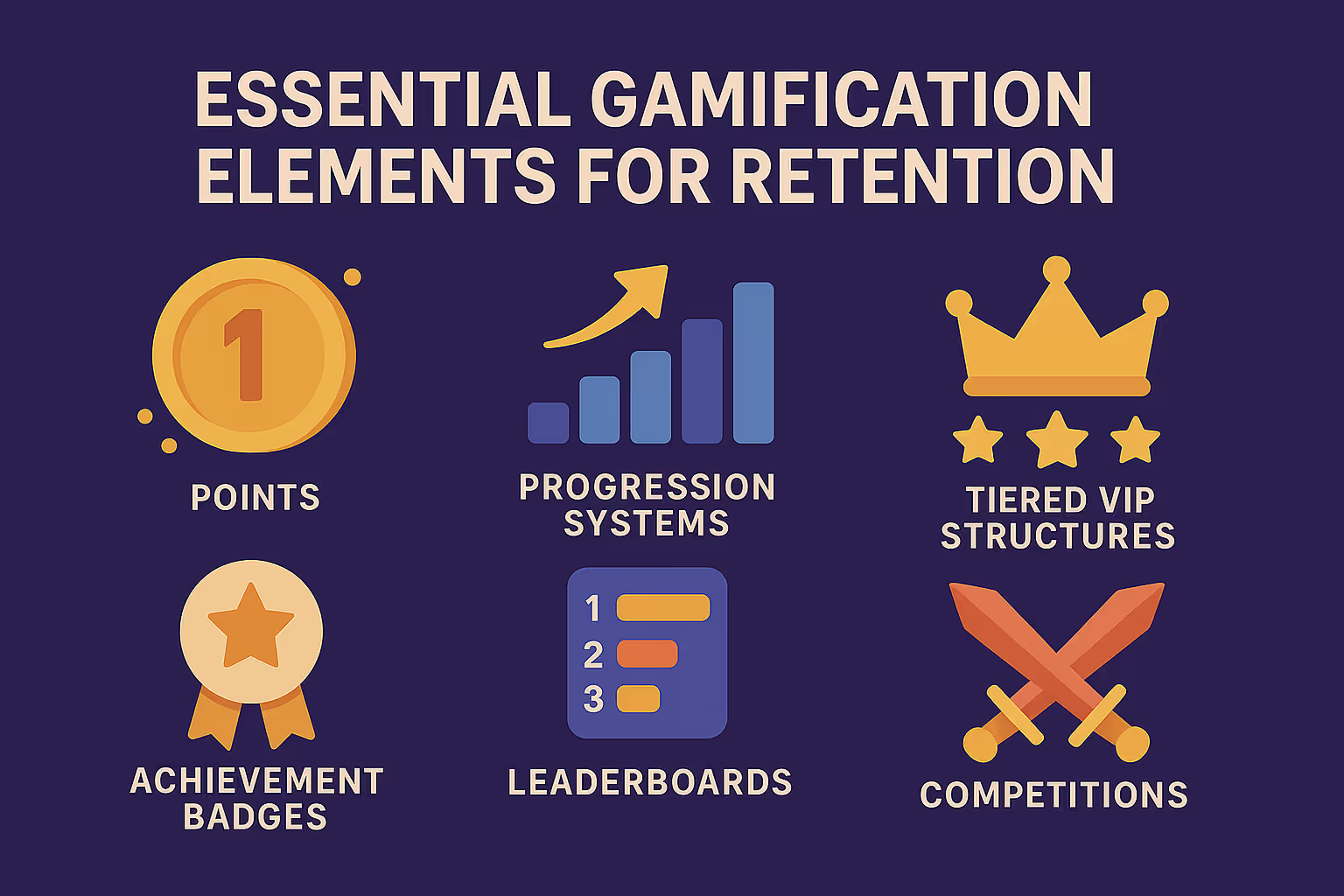
Points and Progression Systems
Point systems boost player engagement when implemented correctly. Players earn points through various activities:
- Betting on sports events
- Playing casino games
- Making deposits
- Daily logins
- Tournament participation
Tiered VIP Structures
Many VIP programs use tiered structures, offering better rewards as players gather more points. Lower tiers typically include standard bonuses, while higher tiers feature:
- Enhanced cashback deals
- Increased point multipliers
- Exclusive event invitations
- Personal account managers
Achievement and Badge Systems
Visual symbols of accomplishment create powerful psychological incentives. Effective badge systems include:
- Level completion badges
- Milestone achievements
- Seasonal challenges
- Social recognition elements
Leaderboards and Competitions
Ranking users based on their achievements creates competitive engagement. Successful implementations feature:
- Weekly tournaments
- Monthly challenges
- Social leaderboards
- Seasonal competitions
The Technology Stack Behind Successful Personalization
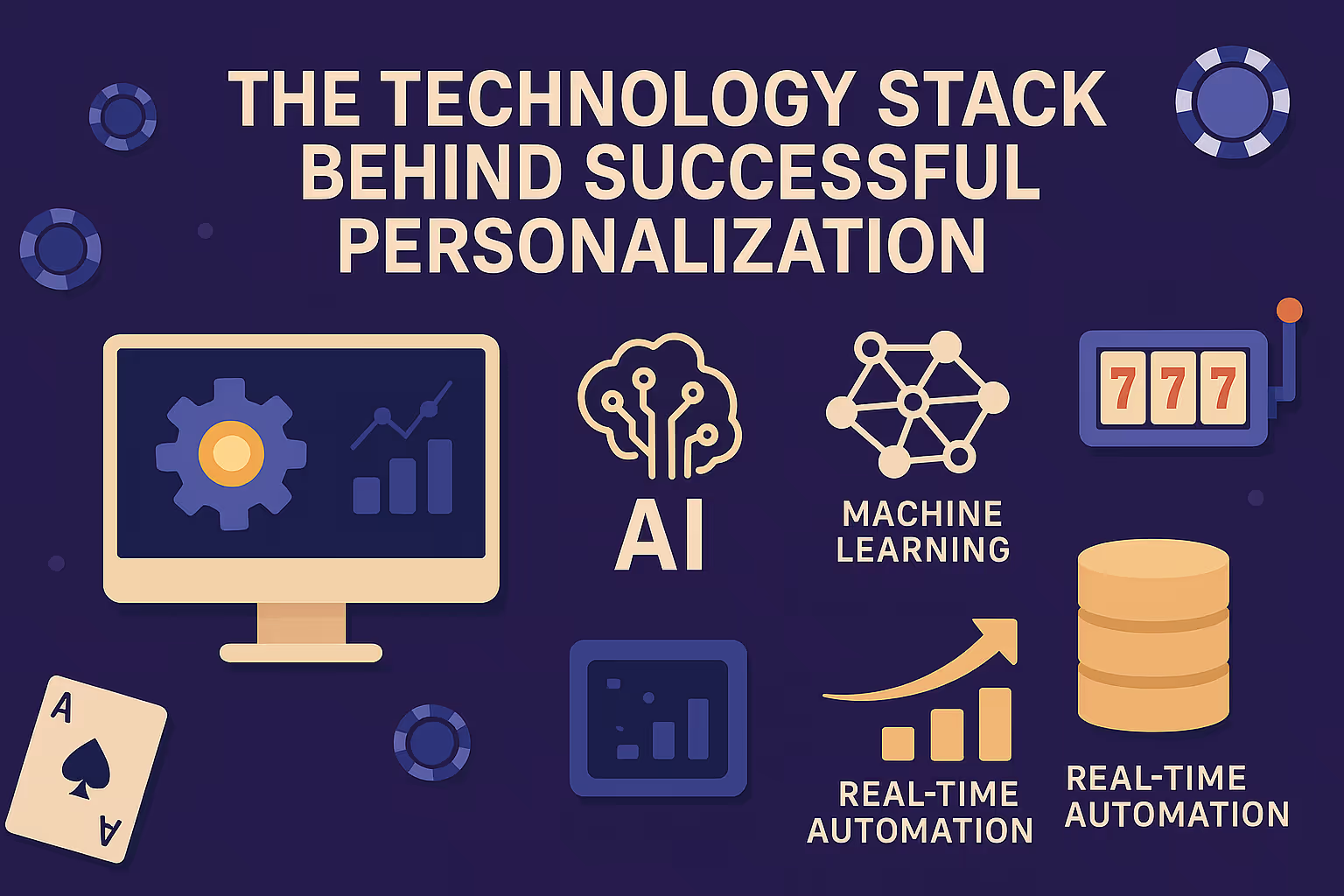
Unified Platform Approach
The backbone of effective personalization is what industry experts call a "unified platform" approach. Instead of cobbling together different systems for bonuses, CRM, and gamification, leading operators use integrated solutions that share data in real-time.
AI and Machine Learning Integration
Machine learning algorithms continuously analyze player data to predict behavior with remarkable accuracy. These systems look at hundreds of data points, from session duration and bet sizing to game selection patterns and deposit frequency.
Real-Time Automation
Advanced platforms include "negative triggers" – situations where the system specifically avoids sending bonuses. For example, if a player is showing signs of problem behavior, the system will pause promotional communications and focus on responsible gaming tools.
{{cta-banner}}
5 Critical Implementation Steps
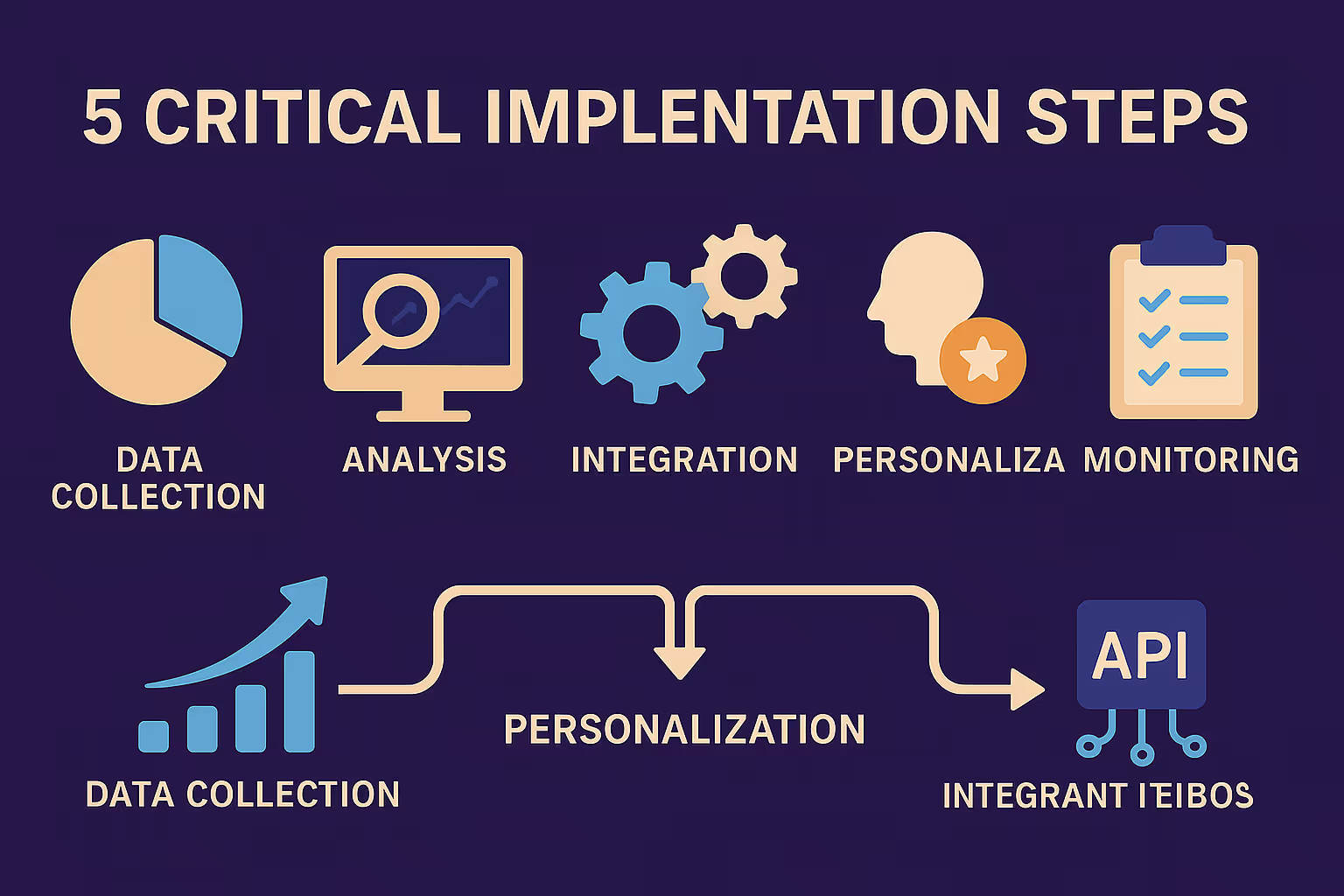
Step 1: Data Quality Assessment
Focus on data quality before diving into complex AI models. Personalization is only as good as the data feeding it, and clean, accurate data will deliver better results than sophisticated algorithms working with poor information.
Step 2: Player Segmentation Strategy
Start by identifying your highest-value player segments and understanding their current journey. Look for obvious pain points – places where players consistently drop off or express frustration.
Step 3: Technology Integration Planning
The integration typically takes several weeks with proper planning. Most operators underestimate the complexity of integrating personalized bonus systems with existing platforms.
Step 4: Testing and Optimization
Begin with small, focused tests that demonstrate value before expanding to full-scale deployment. The most successful implementations start with obvious improvements before tackling complex scenarios.
Step 5: Continuous Monitoring and Adjustment
Successful personalization requires continuous monitoring, testing, and adjustment. Player preferences change, market conditions evolve, and what works today might not work tomorrow.
Measuring Success: Key Performance Indicators

Retention Metrics
- Day 7 retention: Shows immediate impact of personalization efforts
- Day 30 retention: Indicates long-term engagement improvements
- Player Lifetime Value: Measures overall relationship profitability
Engagement Indicators
- Session frequency: Measures how often players return
- Session duration: Tracks engagement quality through play time
- Cross-game exploration: Shows platform stickiness and discovery
Financial Performance
- Revenue per player: Measures monetary relationship improvement
- Bonus efficiency: Tracks promotional spending effectiveness
- Acquisition cost offset: Shows how retention justifies acquisition investments
10 Common Pitfalls to Avoid
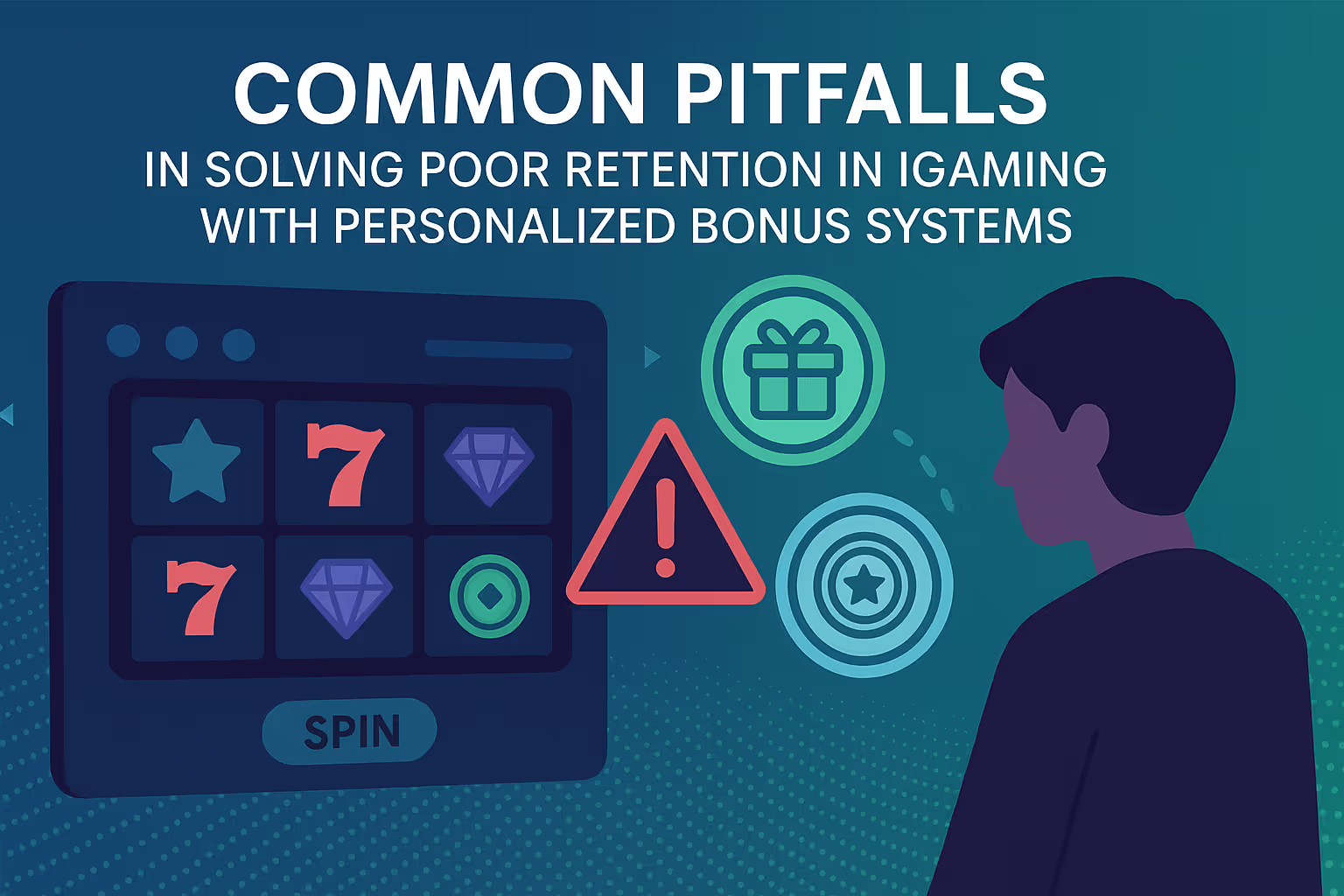
1. Over-Segmentation Complexity
Creating so many micro-segments that the system becomes unwieldy and impossible to manage effectively.
2. Under-Personalization Impact
Making changes so subtle that players don't notice any difference.
3. Data Privacy Violations
Clumsy personalization attempts can backfire badly without proper transparency.
4. Technical Integration Rushing
Rushing the integration process often leads to problems that take months to resolve.
5. Set-and-Forget Mentality
Treating personalization as a one-time implementation rather than ongoing optimization.
6. Generic Communication Styles
Using the same message tone for all player types.
7. Ignoring Negative Triggers
Failing to identify when players shouldn't receive promotional offers.
8. Poor Timing Implementation
Sending offers at suboptimal times reduces effectiveness significantly.
9. Inadequate Success Measurement
Not tracking the right metrics to assess program performance.
10. Cultural Localization Gaps
Failing to adapt personalization for different markets and cultures.
The Future of Player Engagement
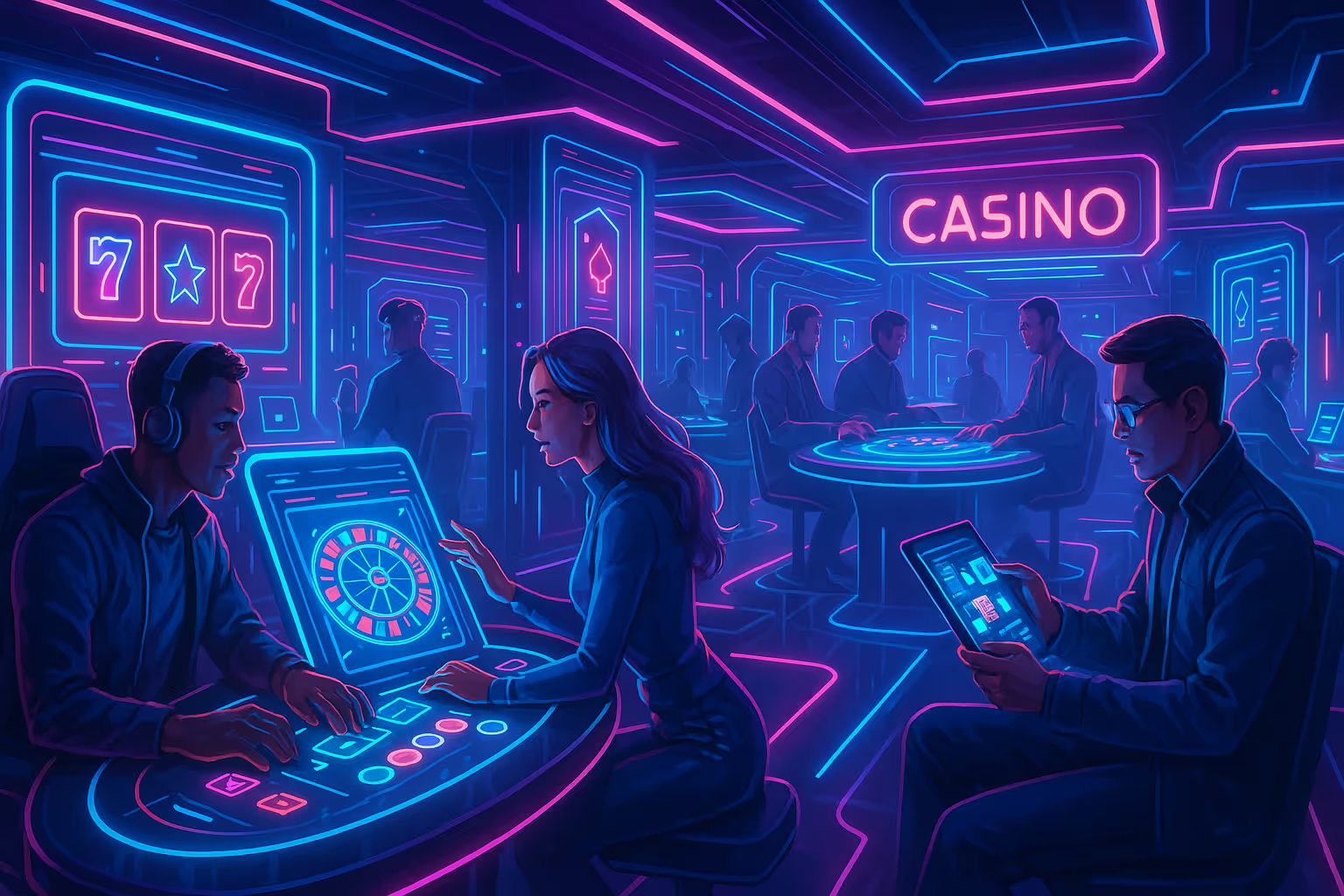
Virtual and Augmented Reality Integration
VR and AR will enable real-time environment adaptation based on player preferences. Imagine bonus systems that adjust the visual and audio experience based on individual player psychology.
Advanced Social Integration
Instead of treating each player as an isolated individual, future systems will consider social connections, friend activities, and community engagement patterns. Bonuses that activate when friends play together represent the next evolution.
Cross-Platform Personalization
As players engage across multiple touchpoints – mobile apps, websites, physical locations, social media – personalization systems will create consistent, coherent experiences across all channels.
Predictive Behavioral Modeling
AI will become sophisticated enough to predict player needs before the players themselves realize them. This represents the ultimate goal of personalization technology.
Building the Business Case
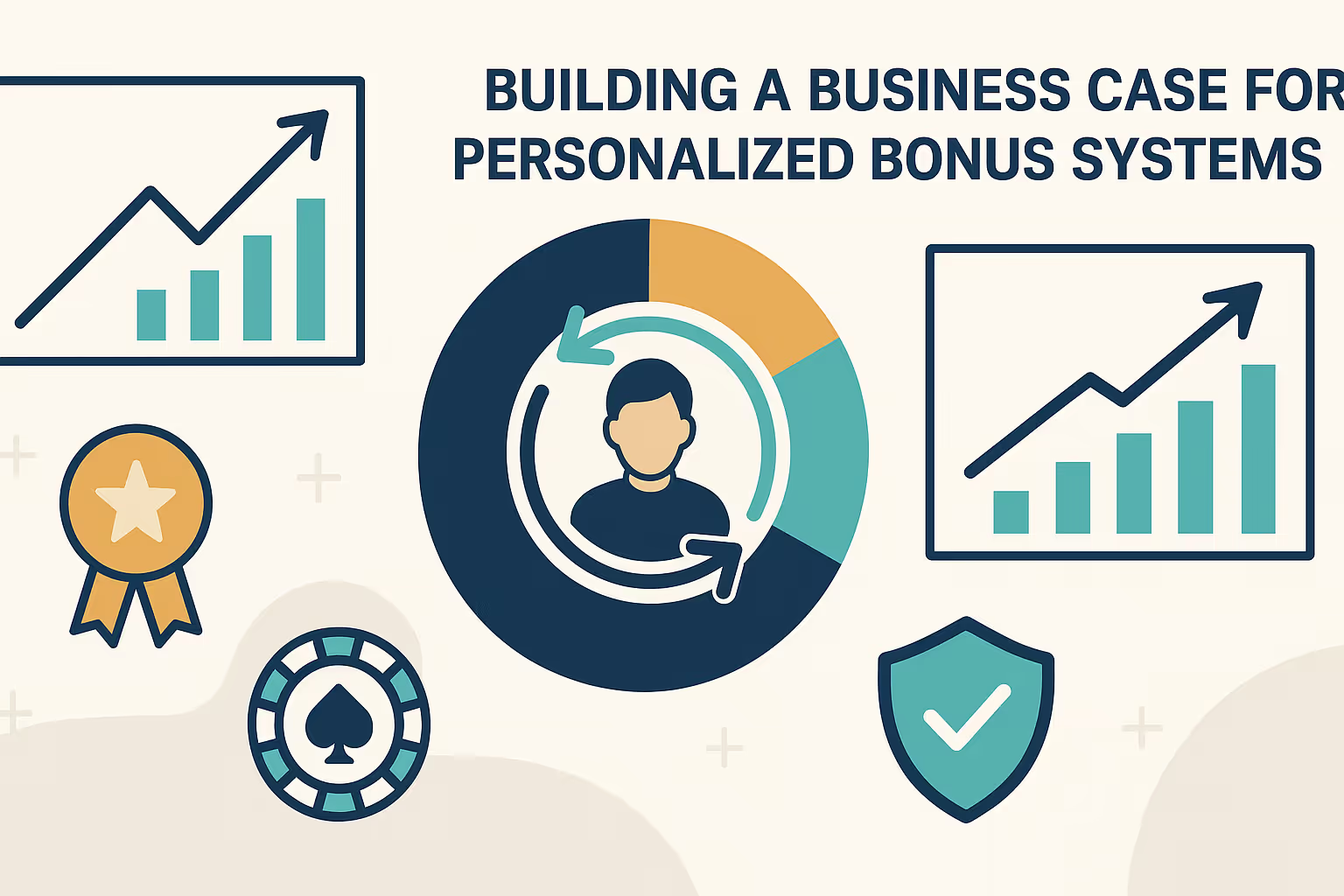
Financial Justification
The financial argument for personalized bonus systems is compelling. In an industry where customer acquisition costs continue to rise, retention has become a survival issue, not just a nice-to-have feature.
Competitive Advantages
Operators who implement effective personalization gain significant competitive advantages:
- Higher acquisition affordability: Better LTV supports higher acquisition costs
- More efficient promotions: Targeted offers outperform generic campaigns
- Genuine loyalty building: Emotional connections reduce competitor switching
- Regulatory alignment: Responsible gaming through appropriate offer matching
ROI Expectations
Industry data shows personalized offers can achieve significantly higher engagement rates compared to broad promotions. Most successful implementations see substantial LTV improvements and significant retention gains that justify investment costs.
Meet Smartico.ai: The Unified Solution
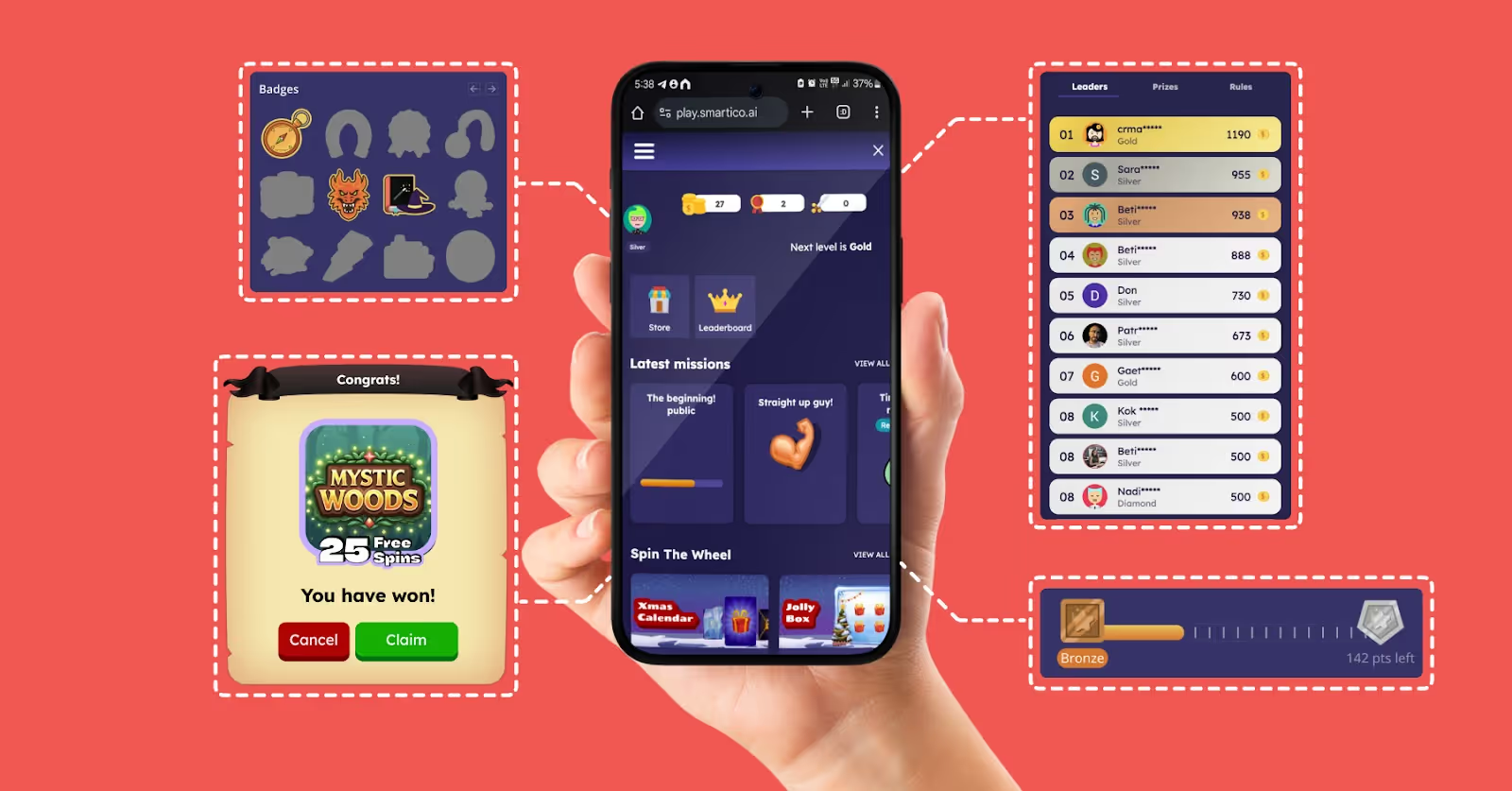
When it comes to implementing personalized bonus systems that actually work, Smartico.ai stands out as the first and leading unified Gamification/CRM Automation software in the industry. What makes Smartico different is its unified approach – delivering CRM, gamification, bonuses, and AI models in a single, integrated platform.
Their AI-powered bonus engine analyzes player behavior in real-time and delivers perfectly timed, personalized rewards. Whether it's cashback offers, free spins, or VIP perks, the system ensures each player gets exactly what they need, when they need it.
Smartico's gamification tools create individual player journeys with customized challenges, rewards, and progression systems. The integration process typically takes three weeks, with dedicated success managers ensuring smooth implementation and sustainable growth rather than temporary boosts.
To find out how Smartico can help you take your iGaming business from A to Z with the power of Personalized Bonus Systems and many other revenue-catapulting tools, book your free, in-depth demo below.
{{cta-banner}}
FAQ
How quickly can personalized bonus systems show measurable results?
Most operators see initial improvements within 30 days, with significant impact visible by 90 days. However, operators with clean, comprehensive player data often see faster results than those starting with limited information.
What's the minimum data requirement to start personalizing bonuses effectively?
Basic personalization can begin with deposit amounts, game preferences, and session frequency. More sophisticated personalization requires behavioral data like bet sizing patterns, win/loss reactions, and time-of-day preferences.
How do personalized systems handle new players with no behavioral history?
New player onboarding uses demographic data, initial game selections, and early session patterns to create provisional profiles. These evolve rapidly as players engage, often using lookalike modeling based on similar existing players.
What about privacy concerns with extensive player data collection?
Modern personalization platforms prioritize privacy through anonymization, consent management, and transparent data usage policies. Successful operators treat data privacy as a competitive advantage, ensuring players understand how their data improves their experience.
Can smaller operators compete with personalization against industry giants?
Cloud-based personalization platforms level the playing field by making sophisticated AI tools accessible to operators of all sizes. Smaller operators often have advantages in agility and customer service that, combined with smart personalization, effectively compete against larger competitors.
How do you measure the true ROI of personalized bonus systems?
Key metrics include player lifetime value, retention rates at various intervals, bonus efficiency ratios, and overall player satisfaction scores. Most successful implementations see substantial LTV improvements and significant retention gains that more than justify investment costs.
Did you find this article helpful? If so, please consider sharing it with other industry professionals such as yourself.
Ready to use Smartico?
Join hundreds of businesses worldwide engaging players with Smartico.










